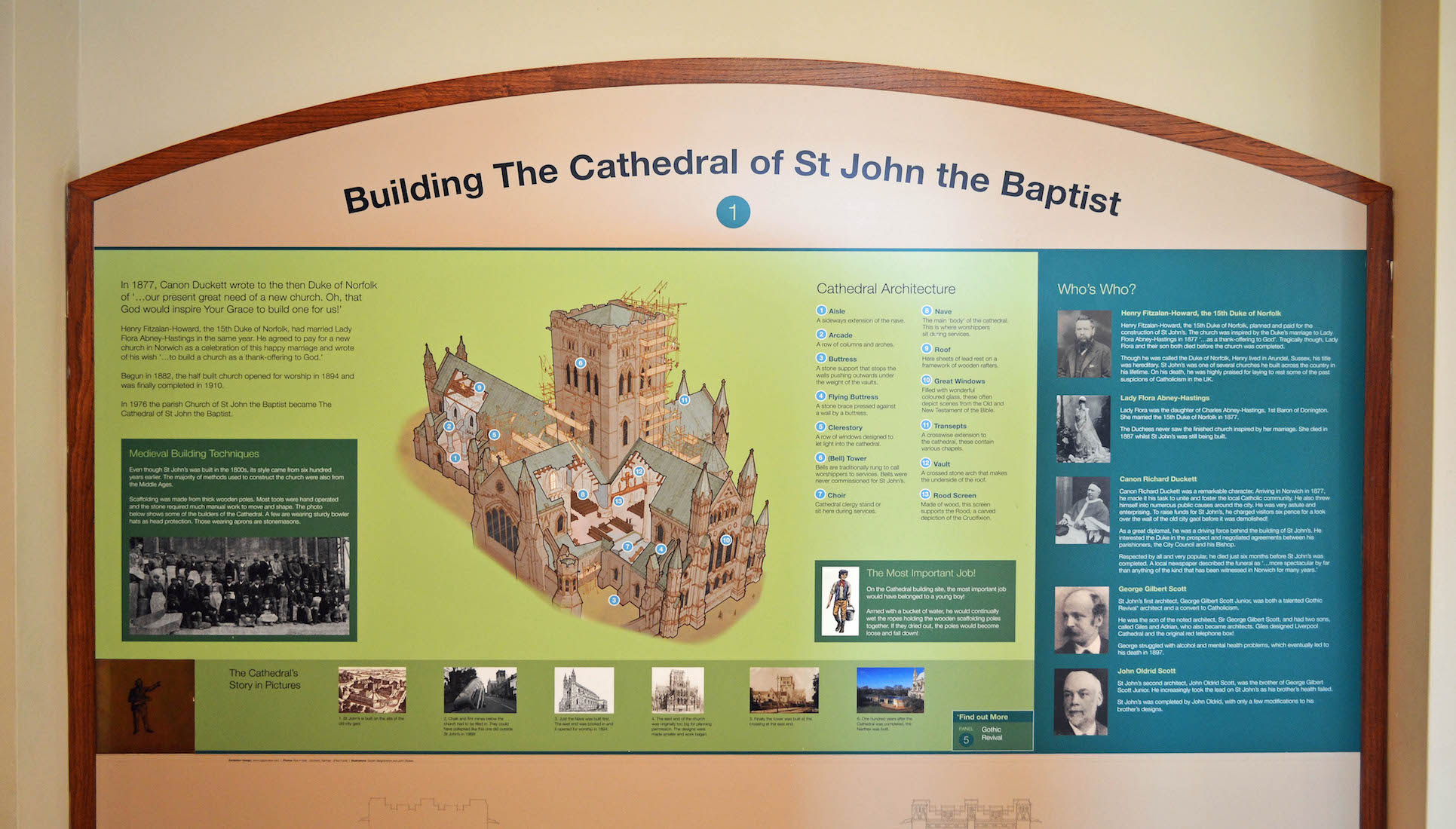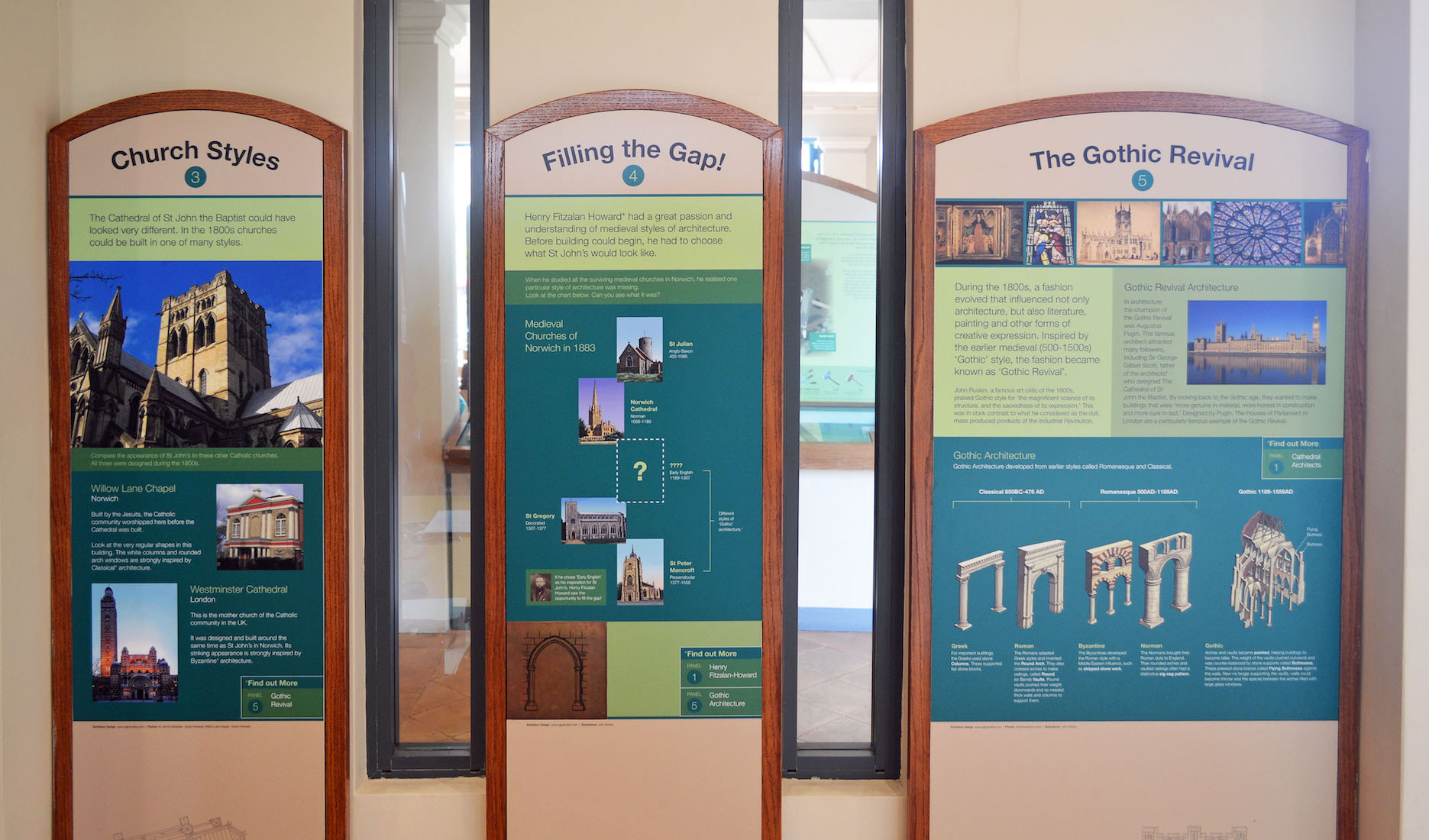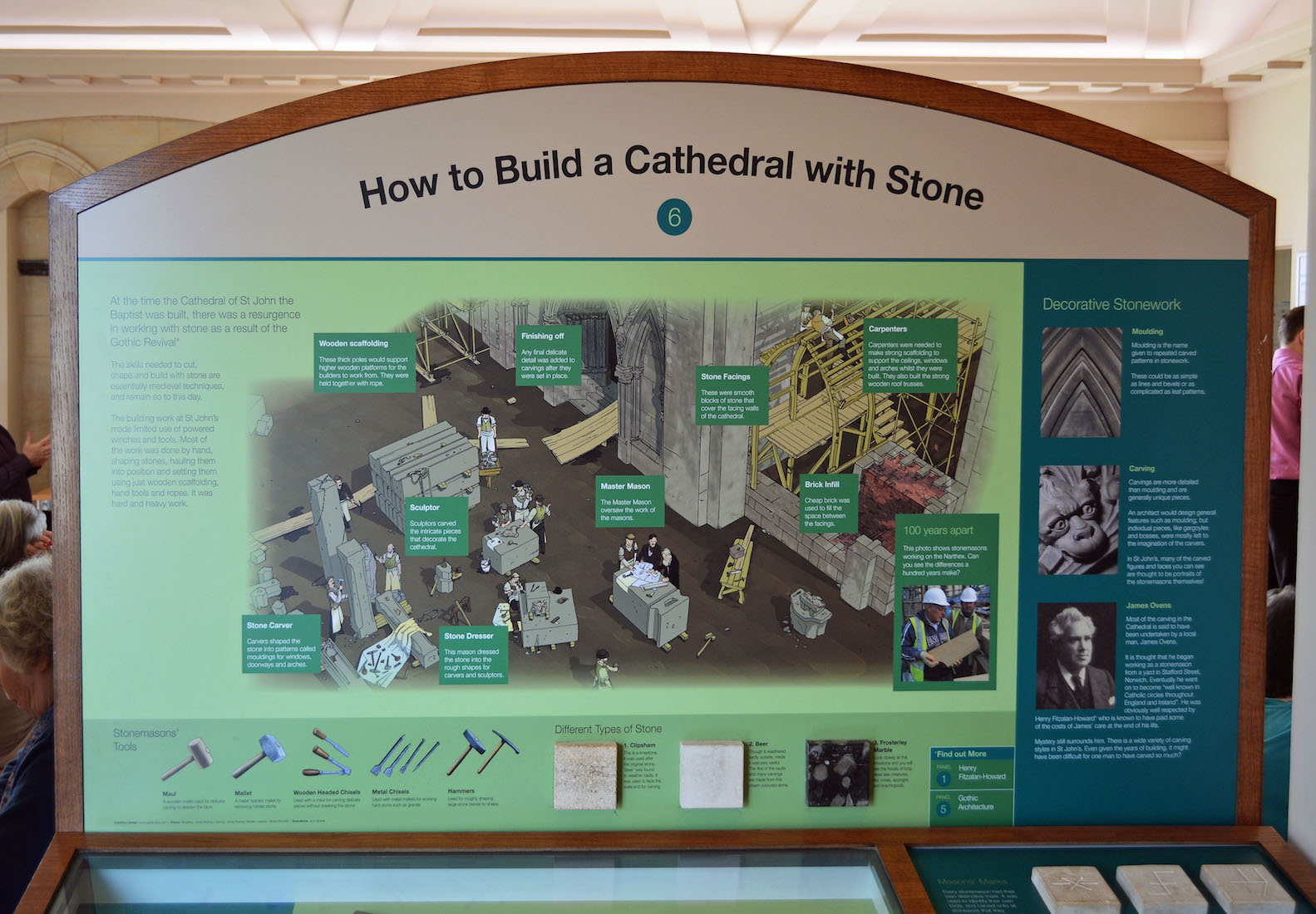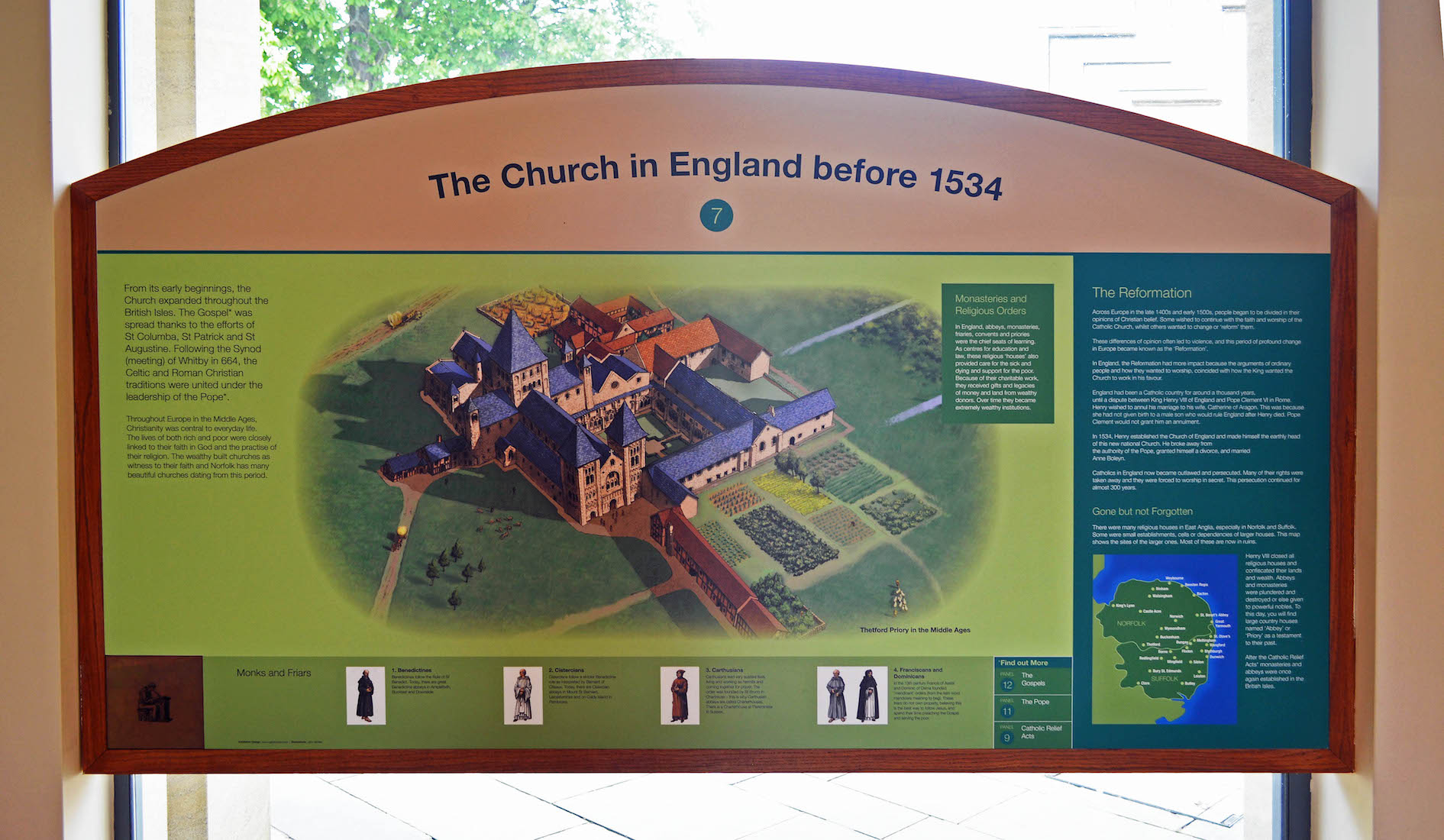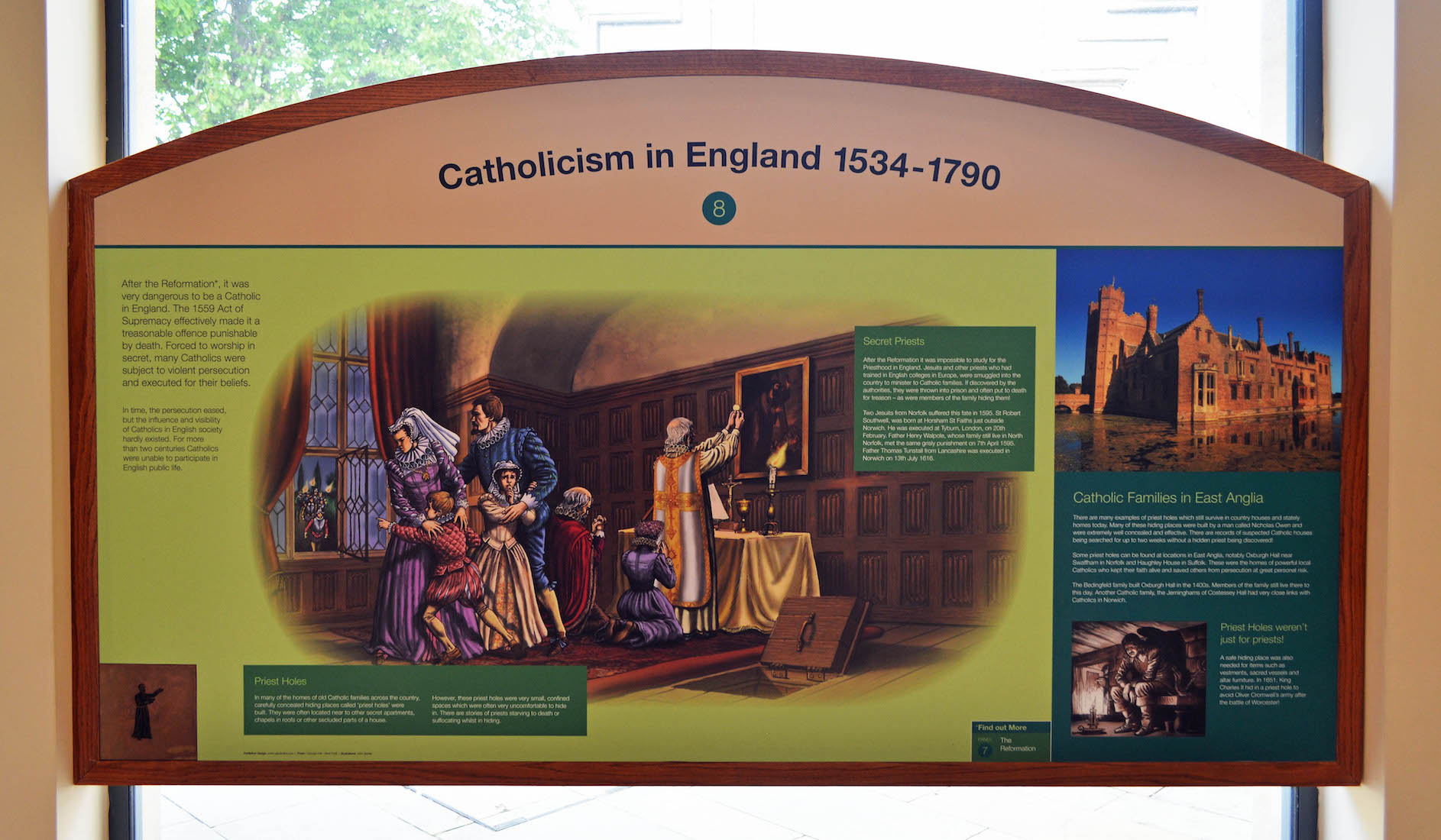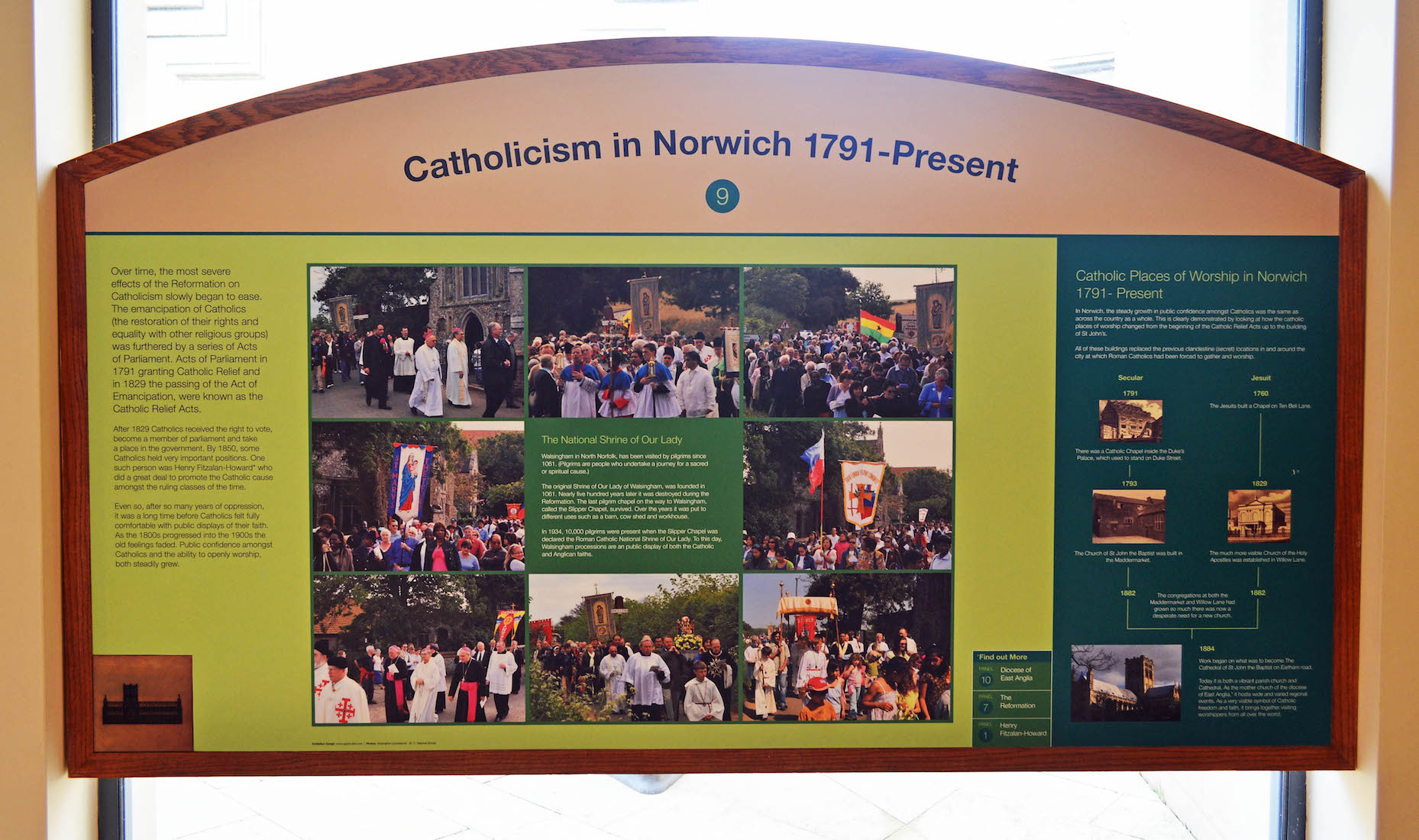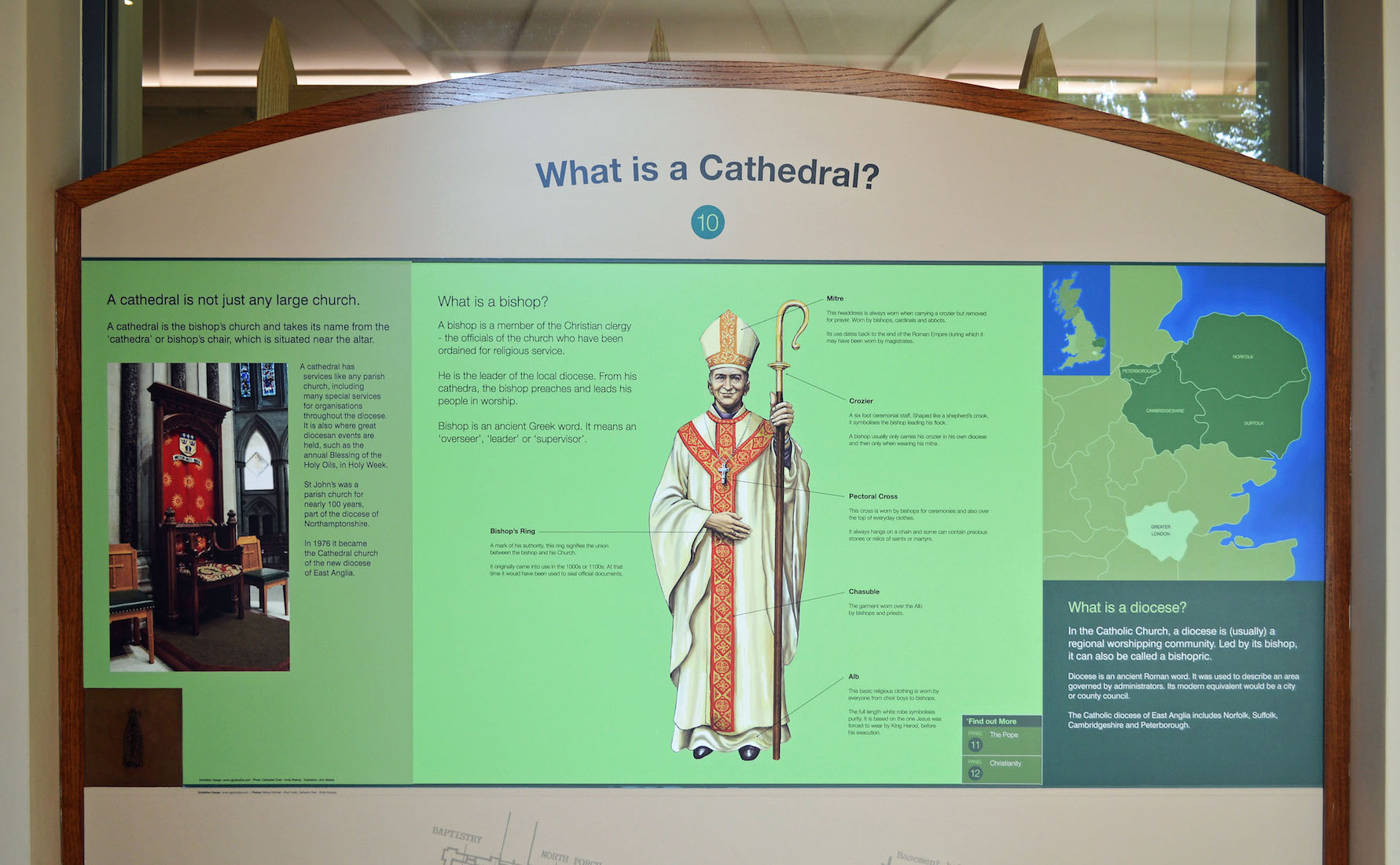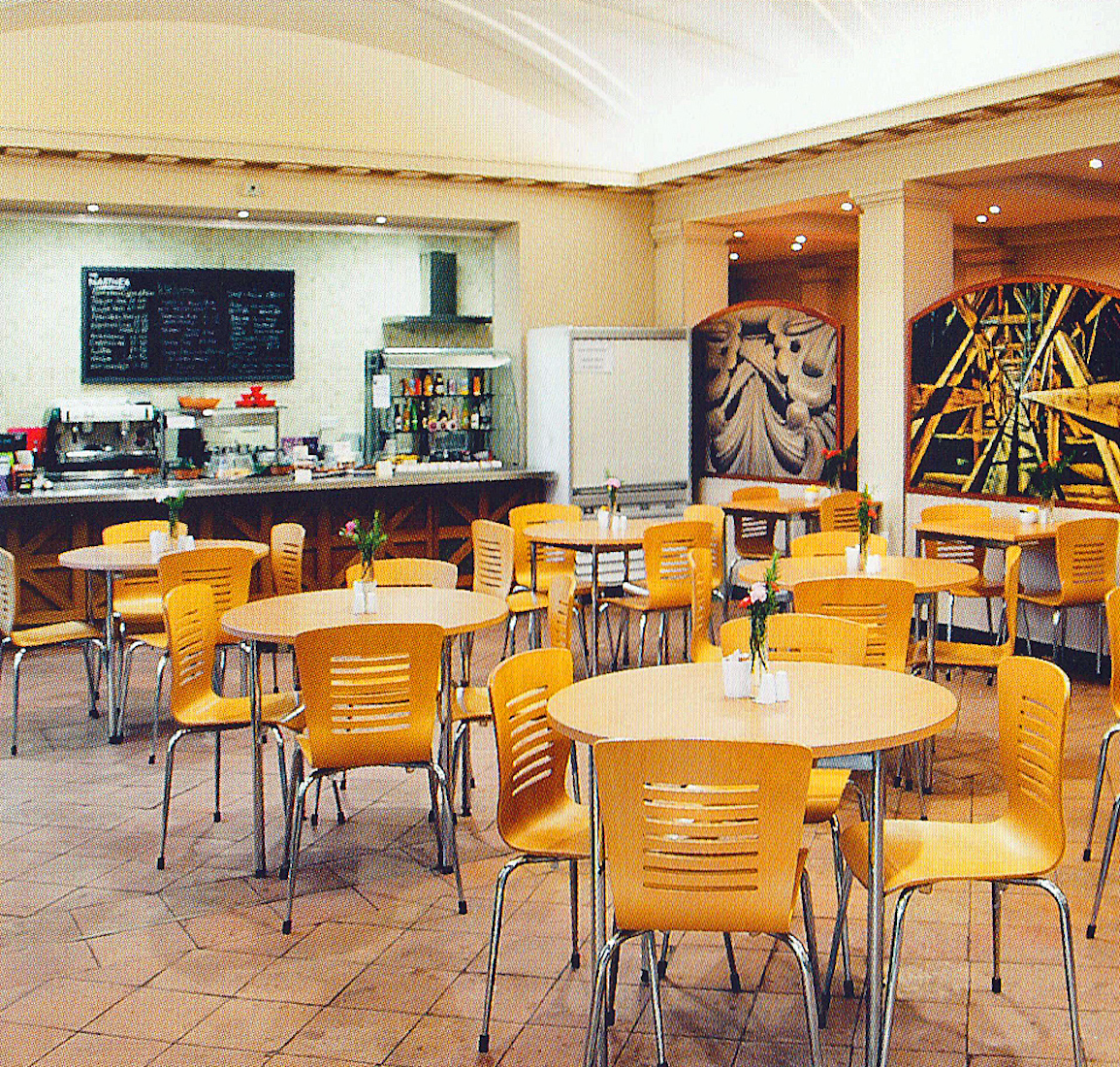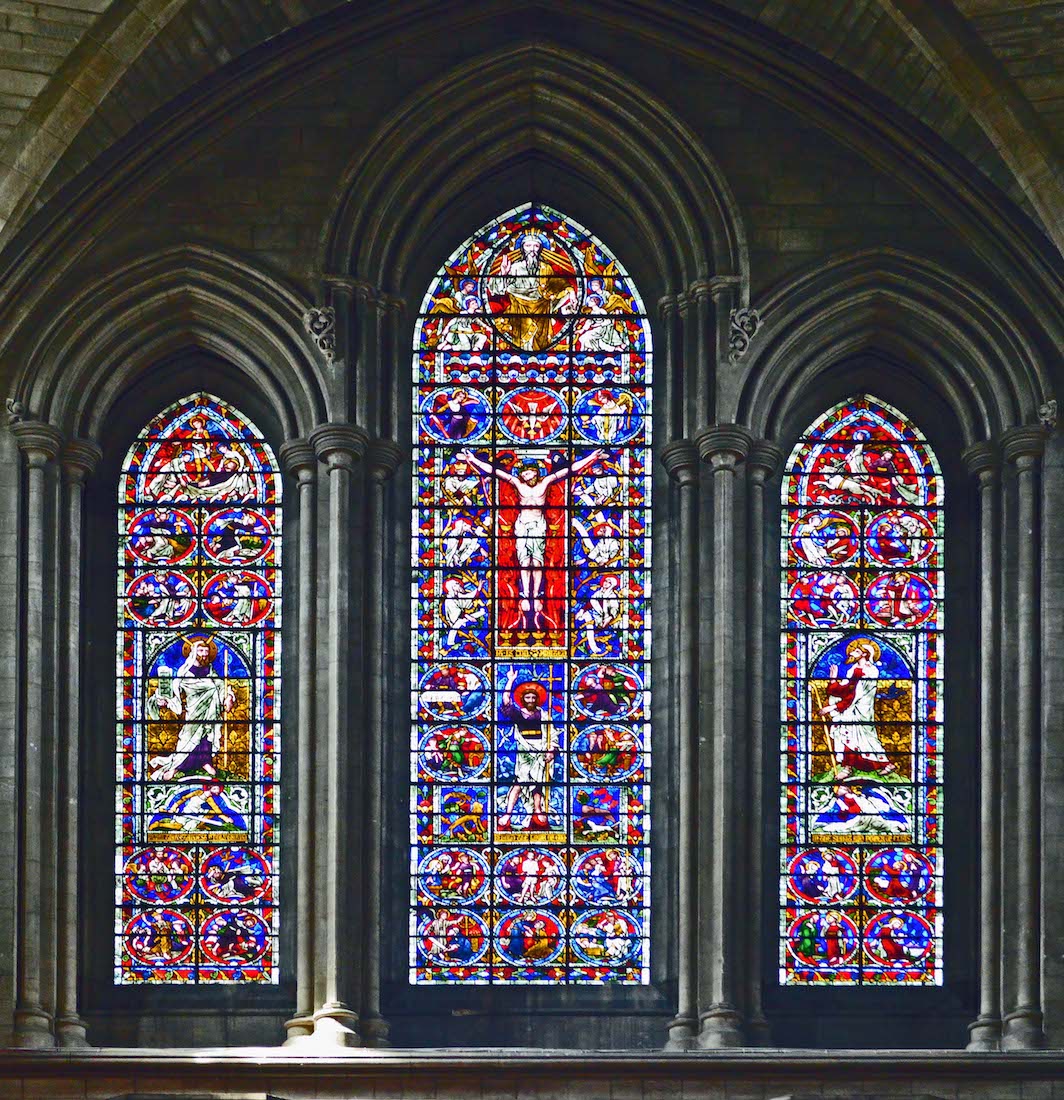
The ‘Great West Window’ represents St John the Baptist and contains many references to both him and other prophets.
•• The Central Light is dominated by a representation of Jesus on the cross, his blood is symbolically flowing into gold chalices. On either side are prophets together with King David. Below is John the Baptist. • The Left Light: The main figure here is Moses carrying a rod and tablets containing the Ten Commandments. Beneath him is an image of Elias. ••• The Right Light: The central figure is the prophet Elijah who stands above his successor Elisha. PLAN
82. WEST BANNER
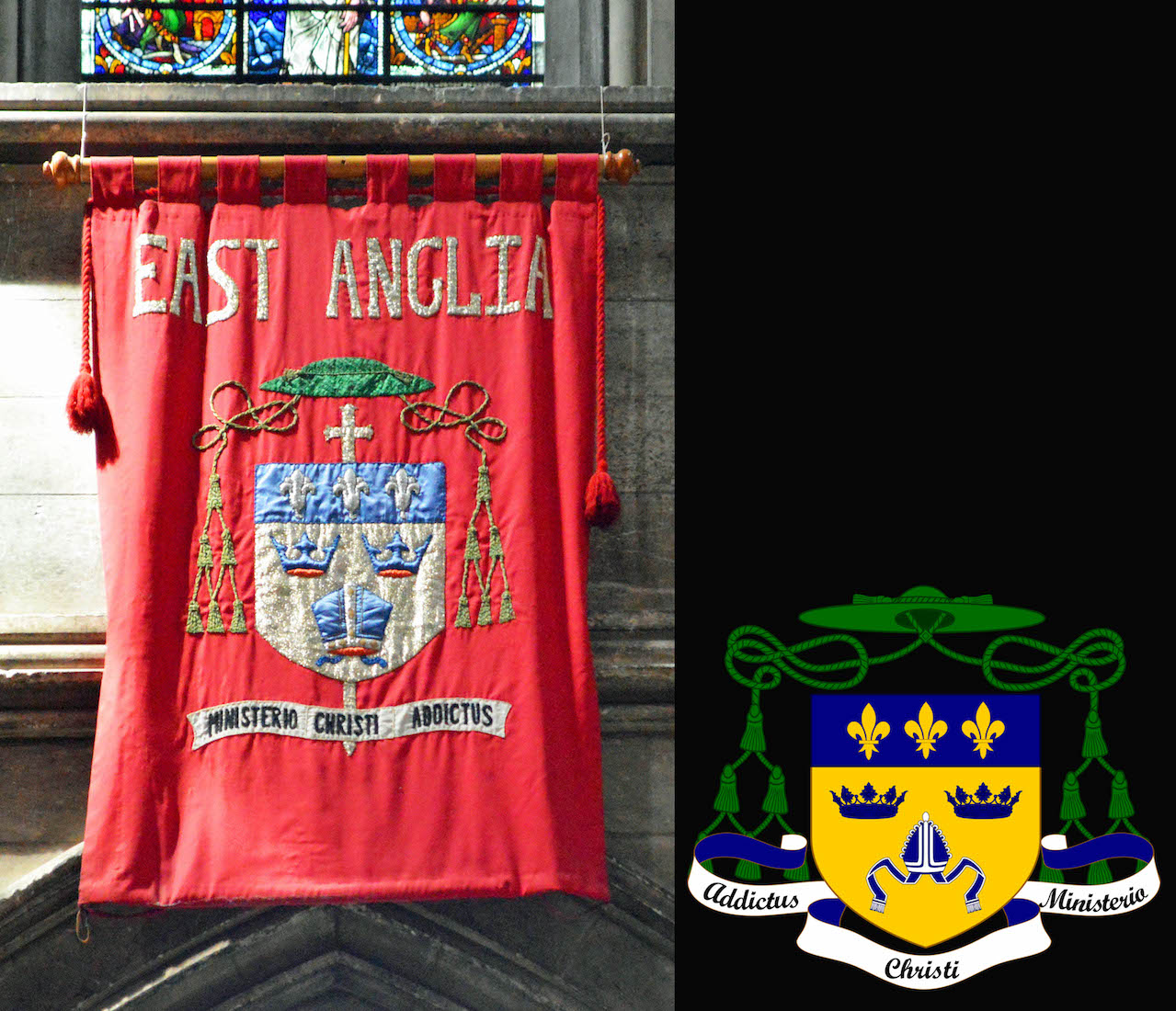
Hanging below the West window is a red banner carrying the words EAST ANGLIA and the motto Ministerio Christi Addictus. This is a colourful variation on the coat of arms for the Norwich Roman Catholic Diocese. We now leave the nave by the South West door, through to the new Narthex. Traditionally the narthex is an entry hall from outside into the nave. This narthex is an attractive open hallway from the nave to the refectory, Cathedral garden and conveniences.
84. NARTHEX PANEL 2
A prominent feature of St John the Baptist’s is the set of beautiful stained glass windows. This poster tells about the making of these windows, and shows the tools used in the process.
85. NARTHEX PANELS 3 – 5
The next three smaller panels are about different styles of architecture. The early cathedrals were built in Norman style, recognizable by the solid columns and the semicircular arches. This style evolved to various styles of Gothic, with pointed arches, more slender columns, flying buttresses, and fan vaulting.
86. NARTHEX PANEL 6
Panel 6 is entitled ‘How to build a Cathedral with Stone’. There are many aspects here: moving the stone, shaping the stone, hoisting the stone into position, fitting the stones together. It is amazing how much was achieved without the benefits of modern technology.
87. NARTHEX PANEL 7
Christianity in England has an interesting history. This panel outlines this history from its beginnings with St Columba, St Patrick and St Augustine, through to the turbulent time of the Reformation.
88. NARTHEX PANEL 8
This panel gives some history from 1534 – 1790. After the Reformation it was very dangerous to hold Roman Catholic belief in England. Catholics lived in fear of their lives, and priests were offered shelter from the authorities in secret ‘priest holes’.
89. NARTHEX PANEL 9
This panel outlines Catholic history in Norwich from 1791 until the present. Over time the restrictions on Catholics were gradually eased, and a Bill of Relief for Catholics was passed in 1791. The Norfolk town and shrine of Walsingham plays a special role in English Catholicism, as does the building of the Norwich Catholic Cathedral.
90. NARTHEX PANEL 10
The final panel asks and answers the question ‘What is a cathedral?'. There is also a description of the role of the bishop. This display of poster panels is very interesting and informative, and this narthex hallway is an ideal place for such a display.
91. CATHEDRAL REFECTORY
After all our hard work we feel the need to retire to the excellent refectory for sustenance! As we have seen, the refectory opens out onto the attractive Cathedral lawns and gardens. [Photo Credit: Cathedral] This completes our tour of the St John the Baptist Cathedral.
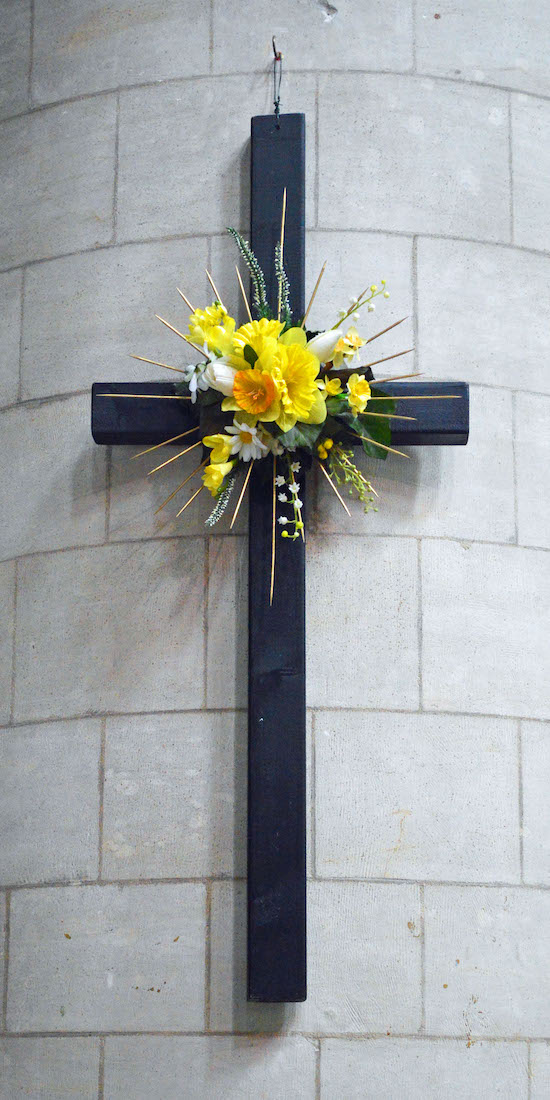
CONCLUSION
I hope you have enjoyed visiting the Norwich Catholic Cathedral with me. I had no intention of photographing this Cathedral initially, but was quickly won over by its beauty and many interesting features.
I am happy to receive constructive comments or corrections concerning this website. The best websites are the ones which have no errors! I am grateful to my wife Margie who came to Norwich with me, and who has proof-read these pages.
As usual I take little credit for the text on this site, which has drawn heavily from Wikipedia, and the Cathedral website:
http://www.sjbcathedral.org.uk
Almost all of the photographs are mine. Exceptions are marked in the text, but I wish to acknowledge gratefully the help of Mike Dixon with a number of window photographs, and for the windows text. The link to Mike’s website is:
http://norwichcathedrals-stainedglass.org/RC_cathedral/home.html
My photographs which appear on this site can also be found in higher resolution at:
https://www.flickr.com/photos/paulscottinfo/sets/
Paul Scott Site created 07 / 2016; reformatted 04 /2020

